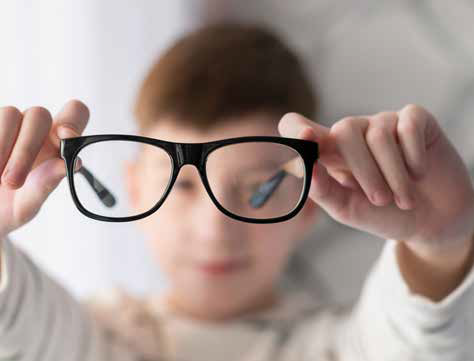
More than just an inconvenience that can be corrected with optical aids, childhood myopia that is left unchecked increases one’s risk of sight-threatening complications later in life.
To combat this, researchers at the Singapore Eye Research Institute (SERI) and the Singapore National Eye Centre (SNEC) have developed an imaging tool that can tell if a child is at risk of developing high myopia, defined as short-sightedness of above -5 dioptres, or 500 degrees.
The diagnostic tool, triple-input polarisation-sensitive optical coherence tomography (TRIPS-OCT), uses novel polarimetric detection to assist ophthalmologists when making treatment decisions. This enables them to identify the best time for at-risk children to receive intervention.
Professor Leopold Schmetterer (below), Head of Ocular Imaging, SERI, shared that myopiarelated complications are currently the main cause of blindness and low vision in Singapore.

Recent studies report that up to 30 per cent of highly myopic patients develop complications, such as myopic macular degeneration and optic neuropathy, which can lead to irreversible visual impairment. Yet, identifying this high-risk group remains a challenge in clinical settings, making it difficult to determine who requires urgent treatment, he said.
A ticking timebomb
Singapore’s myopia rate is among the highest in the world, with 65 per cent of children here becoming myopic by the age of 12, and 83 per cent of young adults are myopic. Recent studies estimate that one in five young adults has high myopia.
With these statistics, Prof Schmetterer said that it is essential to have a diagnostic tool capable of assessing the risk of high myopia. “There is an urgent need to address this issue because, while the majority of highly myopic patients are still young, it will become a major problem and cause of blindness in the future,” he said. “Such a tool would enable healthcare professionals to effectively stratify patients based on their risk levels.”
For example, if a child is identified as high risk for myopia, treatments such as topical low-dose atropine, orthokeratology or other approaches can be applied promptly. Low-risk individuals can be monitored without immediate intervention.
“TRIPS-OCT is particularly beneficial as it ensures that high-risk patients receive timely and appropriate treatment while also minimising unnecessary costs and interventions for those at risk. Given the widespread prevalence of myopia, the tool has the potential to significantly alleviate the overall burden associated with myopia vision care,” Prof Schmetterer added.
How it works
To predict high myopia, the imaging tool detects pathological changes in the sclera, the white part of the eyeball. The sclera is a dense, collagen-rich and mechanically strong tissue that coats the eyes and protects their internal structures.
On why the sclera was chosen as a predictive biomarker, Dr Liu Xinyu (below), Senior Research Fellow, SERI, and Assistant Professor, Duke-NUS Medical School, shared that increasing evidence suggests the posterior sclera playing a vital role in the progression of myopia, but there is currently no known method to inspect this part of the eye. The research team has successfully developed a rapid and non-invasive imaging technology, the TRIPS-OCT, which enables ophthalmologists to safely identify at-risk children.

“Sclera ultimately determines the elongation of the eye, which is the cause of myopia. While there are other biomarkers to consider — such as axial length, refractive error, parental history of myopia, and genetic factors — the medical imaging of sclera is the most direct and significant biomarker from a pathological perspective,” Dr Liu said.
Initial results of the study, published in Nature Biomedical Engineering in June 2023, reported an accuracy of 85–90 per cent. For longer term results, the researchers will start longitudinal studies among two cohorts of children — aged 6–8 years and 11–13 years respectively — for two years. The researchers are also currently developing techniques to enhance the imaging performance of the tool, Dr Liu shared.
According to SNEC, there is potential for the tool to be implemented in primary care settings, such as consultations with optometrists and general practitioners, who can then provide further advice for a referral to a specialist if necessary.
Read more: Protect your child’s eyes from myopia by doing this simple thing! Find out what it is, click here.
Tips to keep myopia at bay
- Having good eye-care habits from a young age can help children maintain healthy eyesight:
- Encourage outdoor activities and play daily. For example, playing ball games outdoors or spending time exploring nature lets the eyes focus on a wide range of near and far objects.
- Plan a daily home schedule for your child so that there is time — around one to two hours — allocated for outdoor activities.
- Avoid or reduce screen time exposure, which increases myopia risk. Try audio books if your child is an avid reader.
- Take frequent eye breaks from near work. Do this by looking out of the window into the distance every 20–30 minutes.
- Read with good or natural lighting (near a window, for example).
- Refrain from lying down to read or reading in moving vehicles.
Sources: SNEC; Professor Leopold Schmetterer, Head of Ocular Imaging, SERI
Get the latest updates about Singapore Health in your mailbox! Click here to subscribe.













 Get it on Google Play
Get it on Google Play